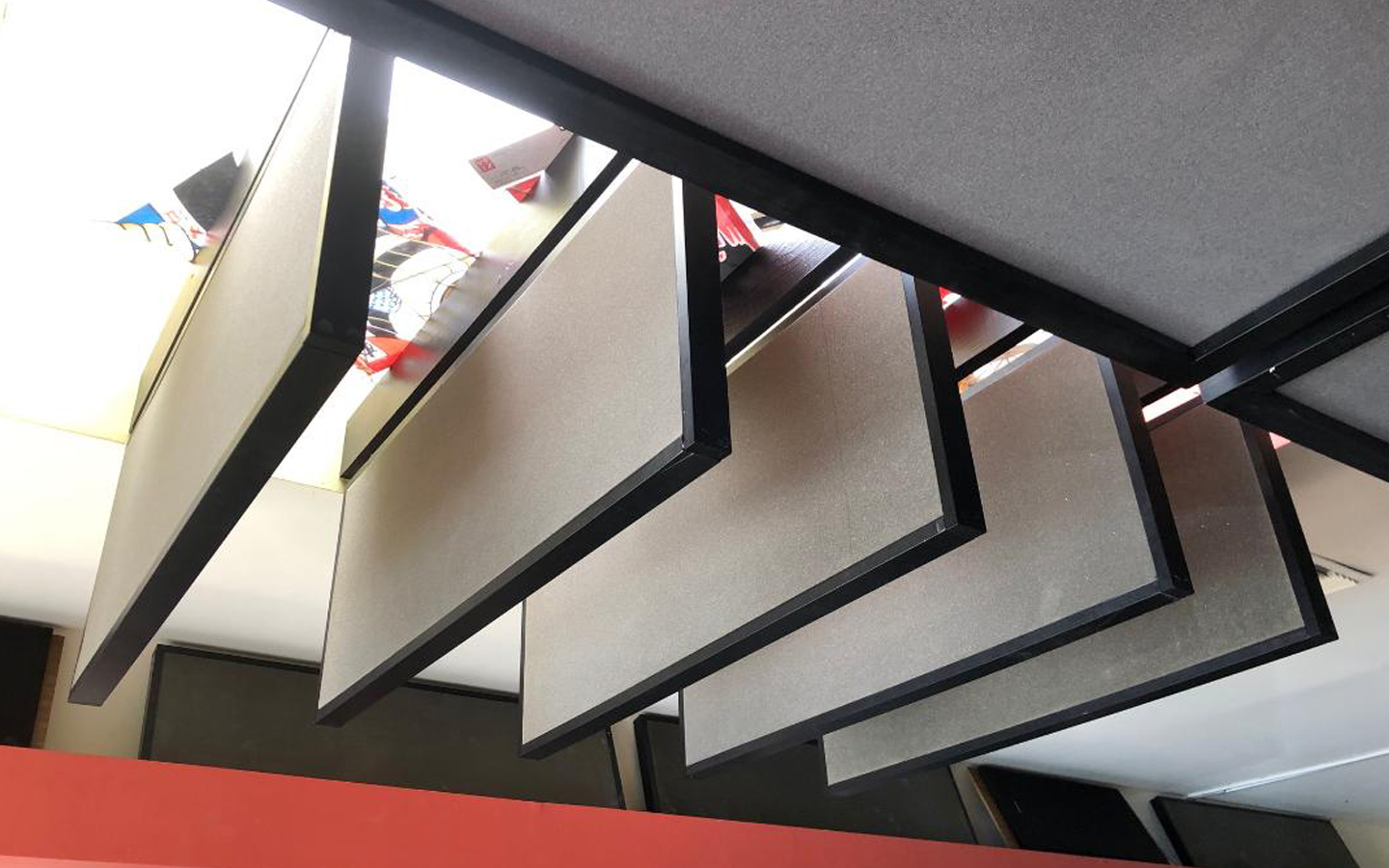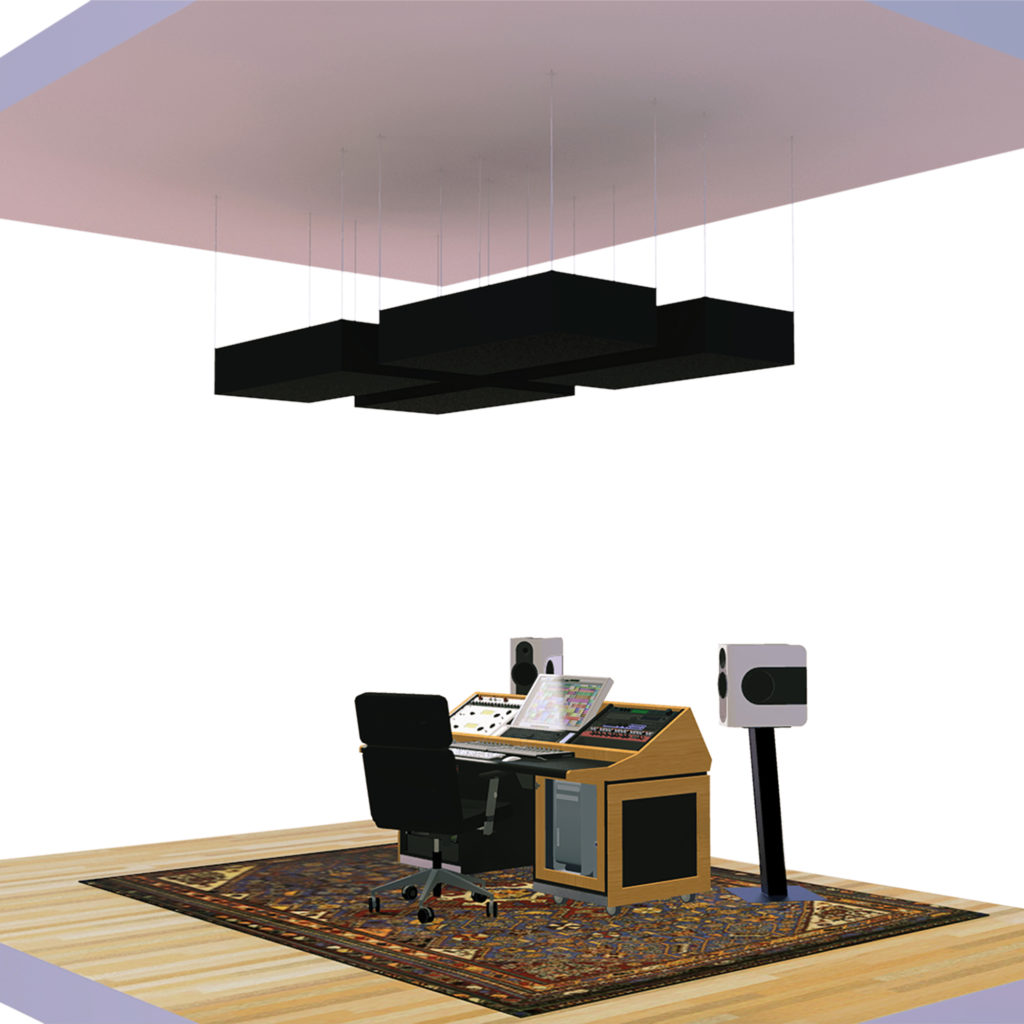
The search term acoustical ceiling clouds can take on different meanings depending who is doing the search and for what reason or goal. The term acoustical ceiling clouds originated in the professional mixing room treatment palette. In a mixing room the goal is to minimize the reflections and unwanted, lower frequency, pressure that is exhibited by our room dimensions. Acoustical ceiling clouds are sound absorbing treatment types that are hung over the mix position to minimize the reflections from the ceiling to the DAW or digital audio workstation. Reflections from any room wall, floor, and ceiling are forms of distortion. The goal of any good mix is more music and less room sound.
https://www.acousticfields.com/product/acoustic-foam/
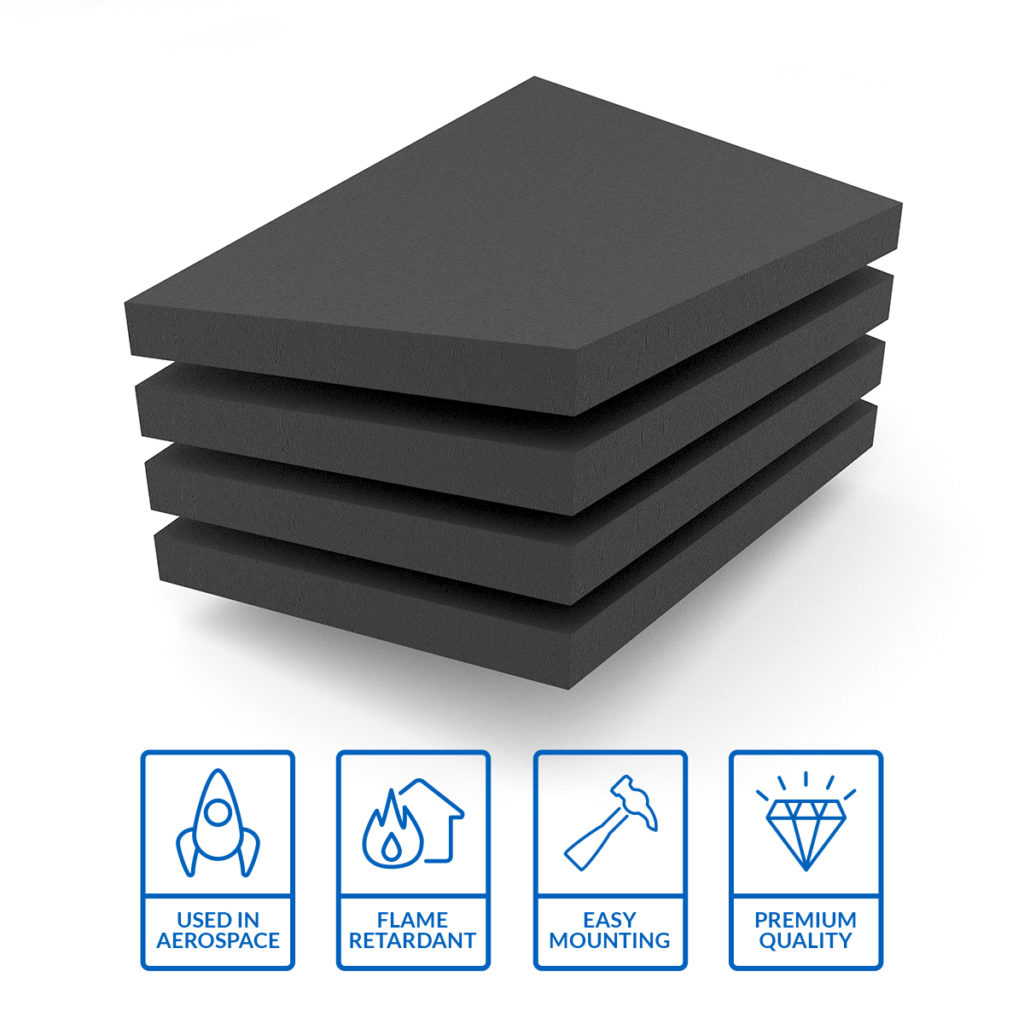
I am certain the term acoustical ceiling clouds came about because it was mounted on the ceiling over the mixing console. In days past, there was actually a room treatment product that resembled a cloud. It was a cloth bag full of building insulation. Acoustical ceiling clouds are usually an absorption technology. You can have boxes filled with unhealthy building insulation, you can use natural organic materials such as wool or you can use the most economical and lightweight treatment type referred to as open celled acoustic foam. You can have an acoustical ceiling cloud that in essence is made of acoustic foam. Foam is predictable and consistent in its performance and can be used with different thicknesses to reach down into the 90 hz. range with a 4″ deep acoustical ceiling cloud.
https://en.wikipedia.org/wiki/Ceiling_(cloud)
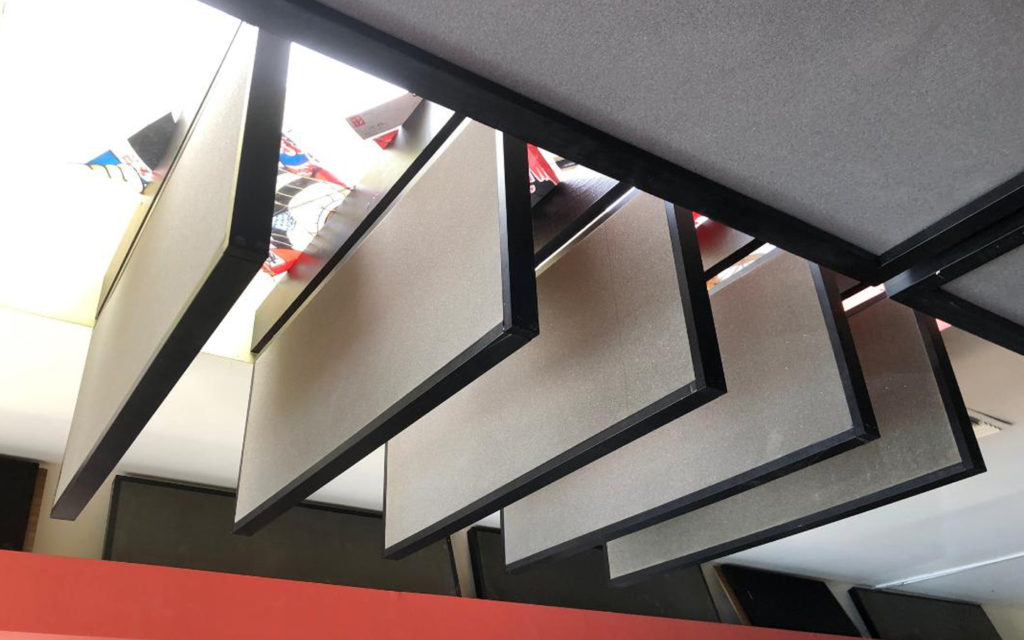
Acoustic Cloud Placement
Another benefit to open celled acoustic foam is that it is lightweight and cost effective. You will need to cover large ceiling surface areas to minimize reflections. Most small rooms take 3 – 4 acoustical ceiling cloud panels positioned over the speakers and mixing position. Installing large suspended ceiling clouds overhead can be a challenge. With foam technology you can reduce the weight of each panel and make it much easier to install. Using any room treatment technology whether absorption or diffusion requires that you develop a sonic strategy for your room. What are you trying to do within the room? This is referred to as usage. How much energy will you be placing within the room. Will it be vocals or full range instruments? All of these and many more will need to be resolved first before any treatment type is used.
https://en.wikipedia.org/wiki/Foam
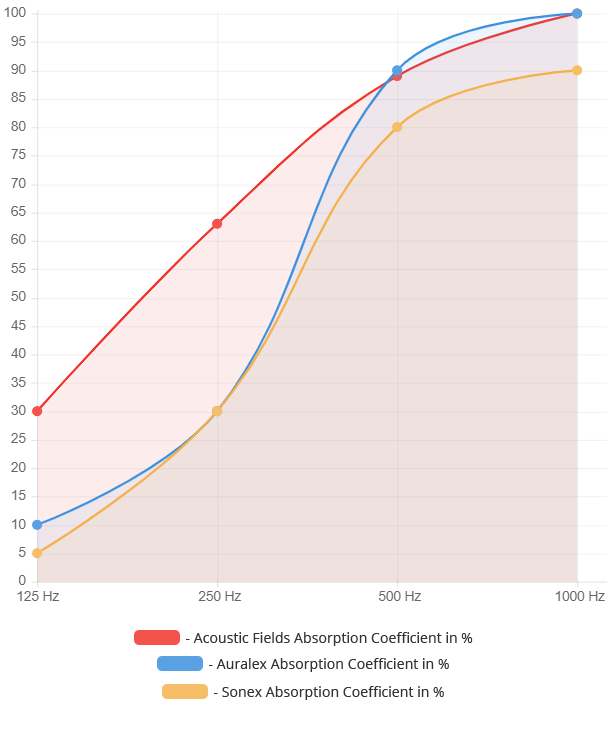
Choose The Right Foam For Your Acoustic Cloud Panel
The dimensions of our room tell us what low frequency energy will not fit within our room. Each dimension allows certain frequencies to “fit” inside that dimension and certain frequencies that will not fit. Those frequencies whose length will not fit into the dimensions of the room produce room distortions that are audible. These distortions are termed room modes. Modes can exaggerate certain frequencies or complete octave bands and certain room modes can attenuate them completely. You will either hear too much energy with room modes or not any energy at all. They can be that powerful and audible. Mixing rooms are all about translation. Engineers want to be able to hear everything about the music and no distortions from the room.
https://www.acousticfields.com/product/p-13-m-modular-acoustic-diffuser/
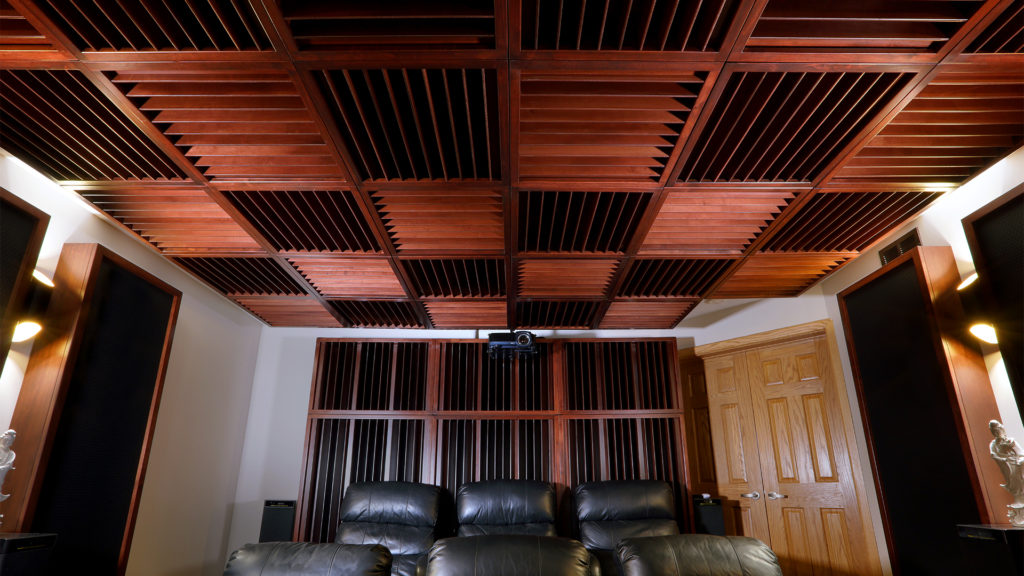
To make sure you are going down the right road with your room design and treatment, you must develop a sonic goal for your room and work and apply tactics to that goal. A room without a goal is like running around plugging holes in the dam with your fingers. In room acoustics, there are always more than 10 holes to deal with. With a goal you can apply the correct amount of absorption treatment type to reach your room goals. You may need to spend more on low frequency management since the size of your room is too small for your intended usage. All of these goals must be first defined and then treated. Treating without an end goal in mind is a waste of time and money.
https://www.acousticfields.com/recording-studio-design-service/


